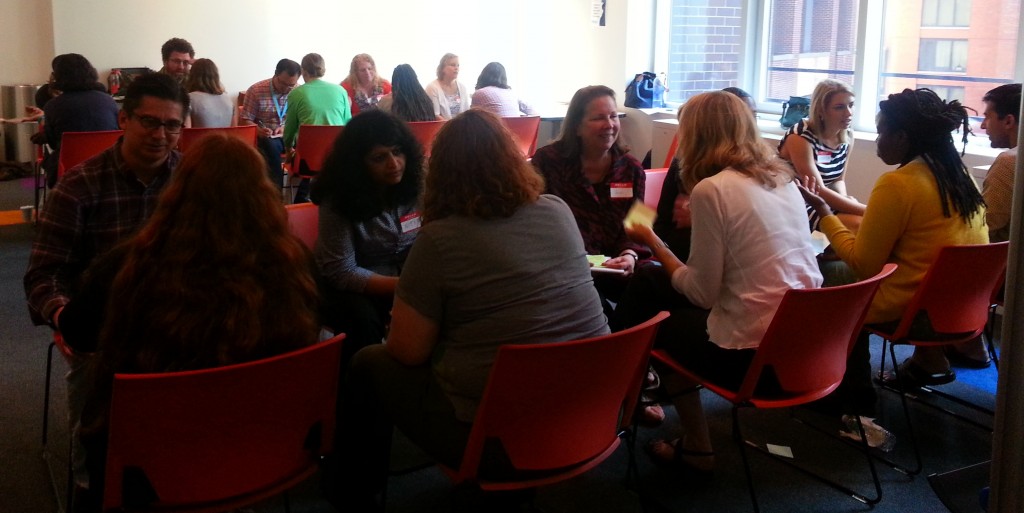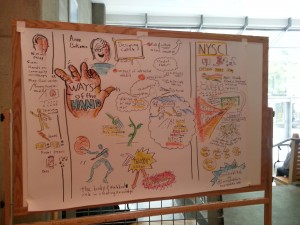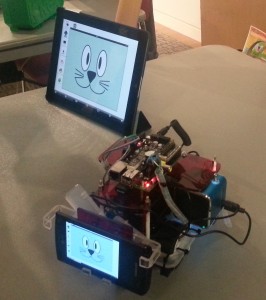For four glorious days, industry mingled and held hands with research at the 2013 Interaction Design and Children’s Conference, which took place from June 24-June 27 in New York City. This year, Sesame Workshop co-hosted the conference with The New School, a strategic move that further extended the conference’s efforts to bring together industry and research. I had the pleasure to attend the conference this year, where I saw four prominent themes:

We can be friends
As mentioned, researchers and practitioners intertwined at this year’s conference. Sesame Workshop helped launch the conference with a humorous and inspiring presentation from Sesame’s Bert (a true treat for the attendees!), CEO Melvin Ming, and SVP of Education and Research Rosemarie Truglio about the Workshop’s research and interaction projects. The trend of industry cohosting with research will continue next year at IDC 2014 with LEGO and Aarhus University.
Let them Make….!
A consistent theme throughout the conference and a majority of the presentations was the importance of making. The conference started off with hands-on design activities at the New York Hall of Science, where attendees of all ages made circuits and programmed arduinos. Two of the workshops on Monday were “Digital Fabrication and Making in Education” and “Interactive Technologies that Enhance Children’s Creativity.” And several paper sessions focused on different methods of making like programming and collaborative art. Scratch, a tile-based visual programming environment and toolkit targeted towards kids, announced their new ScratchJr web and iPad app. Paulo Blikstein, a professor at Stanford University, spoke about different constructionist toolkits. He noted that designers should provide relevant scaffolding and pay attention to the children we’re designing for so we can appeal to them with more age-appropriate toolkits. He also emphasized that we are not “training a workforce, but training a think force!” The theme was topped off by a Tribute Panel on Seymour Papert, where panelists including Allison Druin from University of Maryland, Edith Ackermann and Mitch Resnick from MIT, and others, spoke about Papert’s groundbreaking work in constructionist learning.
Give them the voice and means
Making and creating is one way to give children a voice. David Monina Sengeh highlighted this through his presentation as the conference’s keynote speaker. A doctoral student at the MIT Media Lab, David was joined by three students from Sierra Leone to talk about their experiences with creating their own DIY projects. He emphasized how it is crucial to focus on young kids who did not grow up in a culture that depends on external actors and low self-efficacy. Doing so will allow the culture to evolve into one that is inspired to act and make themselves. Essentially, our responsibility is to create spaces that enable children to change their world.
Design universally
Speaking of creating things that enable children to change their world, a heavy part of the conference focused on designing for all children, especially those with special needs. There were sessions on interpersonal communication in special educational needs classrooms, using music with those who have complex needs, and games for children with autism.
 Other highlights included hand-drawn visualizations of the conference, a visit from Cookie Monster at the New York Hall of Science’s evening reception, and poster presentations from all over the world—several of which were done by our new fellow for next year, Jason Yip! Check out images, videos and other information from the conference at the main site: http://idc2013.org/.
Other highlights included hand-drawn visualizations of the conference, a visit from Cookie Monster at the New York Hall of Science’s evening reception, and poster presentations from all over the world—several of which were done by our new fellow for next year, Jason Yip! Check out images, videos and other information from the conference at the main site: http://idc2013.org/.



